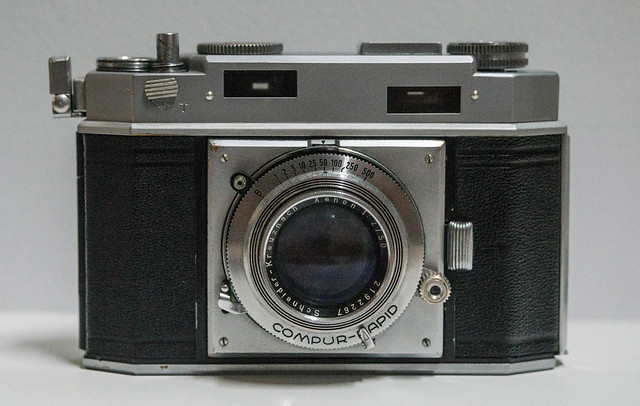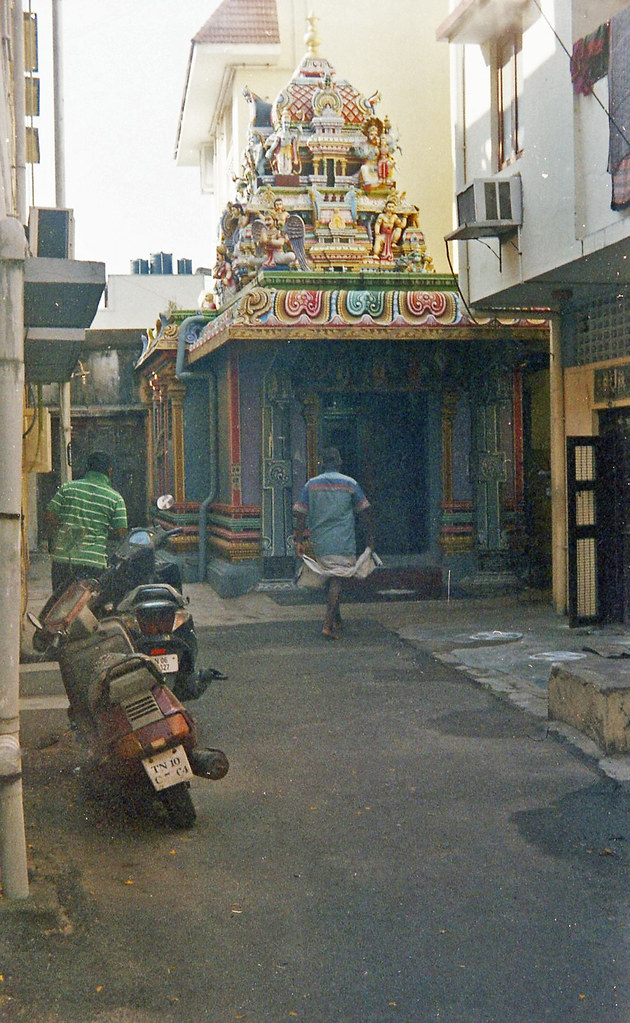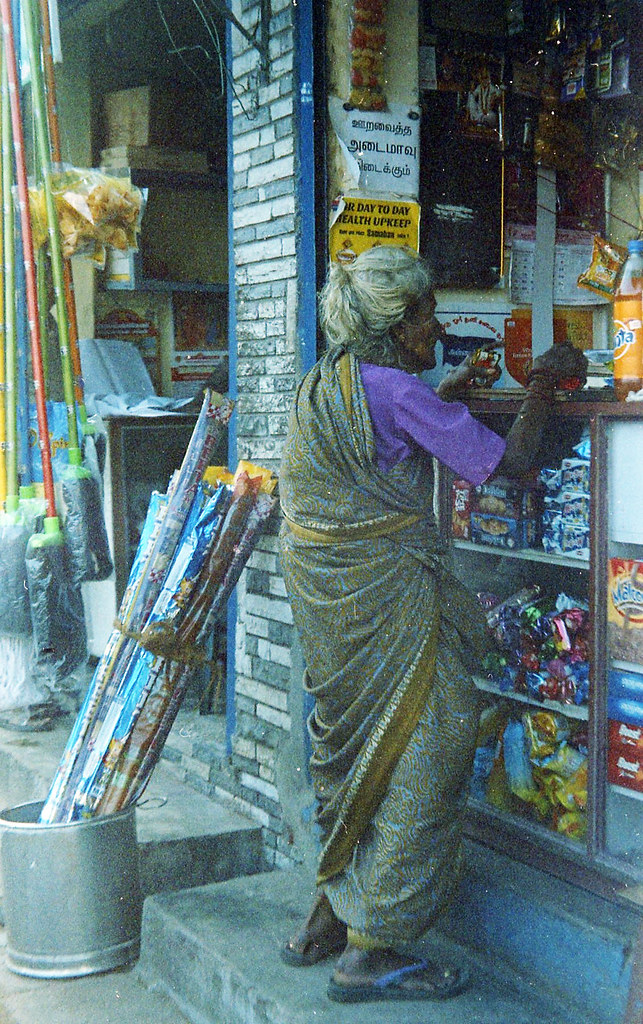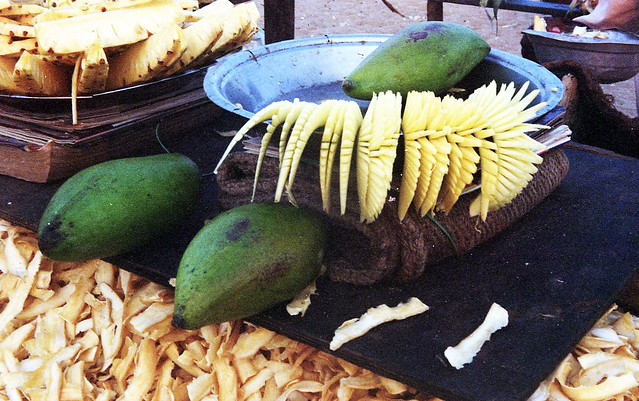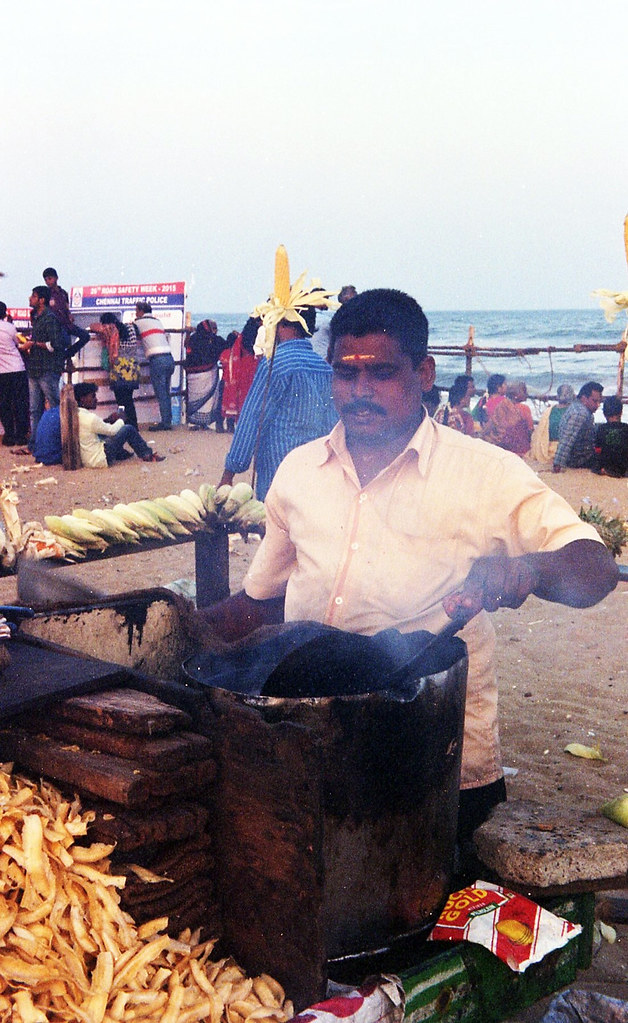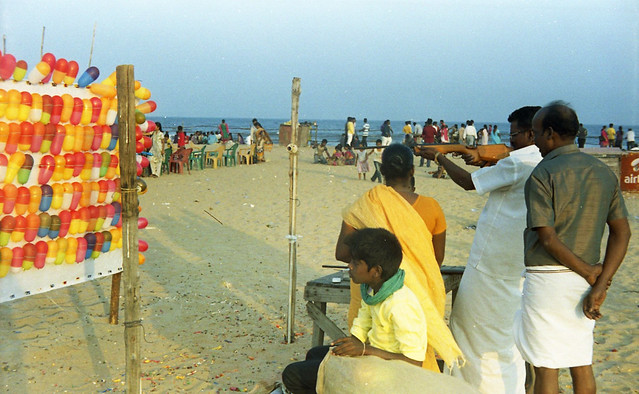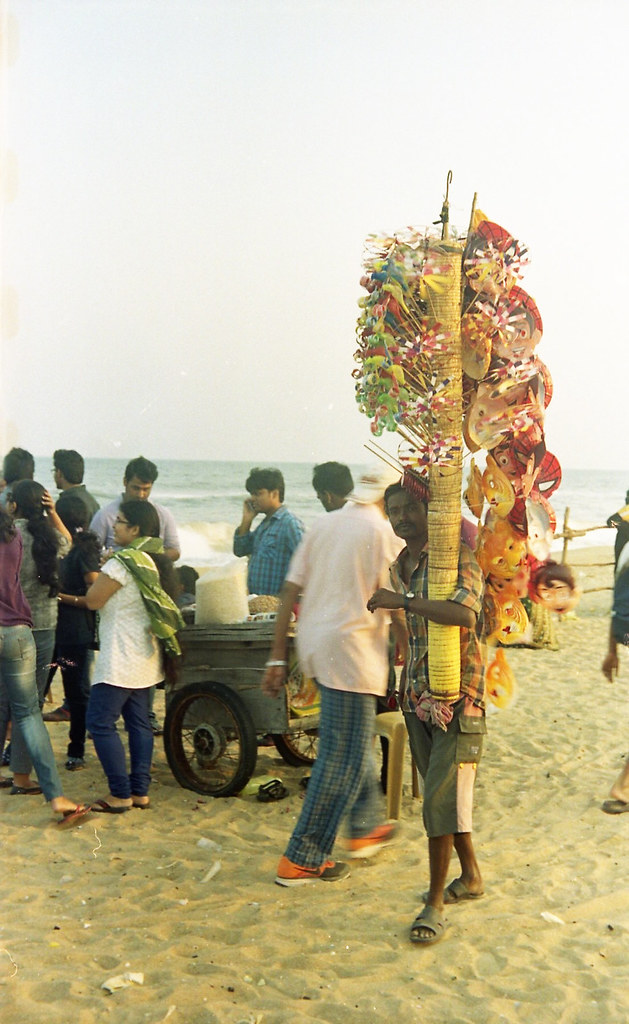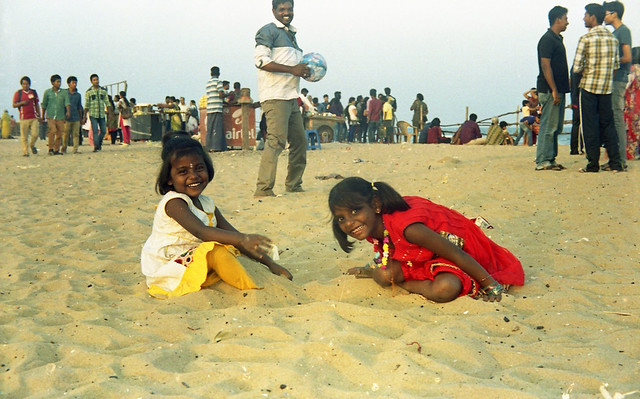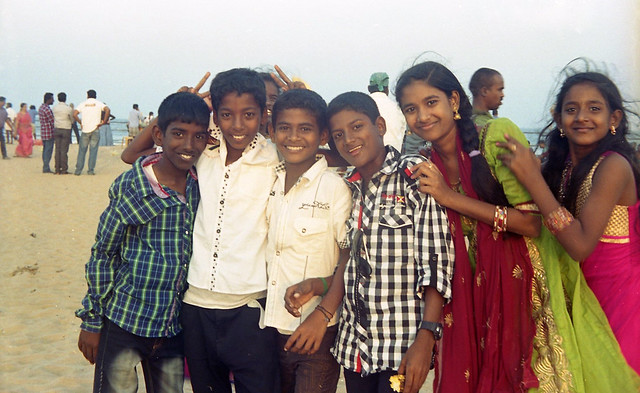Often I blog about old cameras I’m testing out, often I blog about things we see and experience in India. This post has a little of both!
The Ansco Agfa Karomat 36 (known by variants of that name) is an Agfa Karat 36 rebadged for the American market, where it was sold by Ansco from about 1948 through the early 1950s. In the line of Karat cameras, it’s one of the only ones to break from tradition and use a standard 35mm cassette, instead of the “Rapid” cartridges Agfa/Ansco would later re-launch as an unsuccessful alternative to Kodak’s 126 cartridges. But the nice part is that, although the Rapid cartridges can still be found and loaded, it makes it much more practical for modern use.
The camera feels really solid in your hands, and it’s a nice piece of technology for 1950: a functioning rangefinder with a clear, Schneider-Kreuznach F/2 lens. To use it, you have to pop out the bellows, and of course like most cameras of that era, manually set the f-stop (f/2 to 16), shutter speed (B to 1/500) and focus, with the assist of the rangefinder. In 1953, it sold for US$164 (over $1200 in 2007 US dollars – these were not cheap cameras!).
On my first venture out into the streets of Chennai, the results were a bit disappointing – all kind of murky and dark. Photography with old cameras can be a challenge in Chennai, because it’s always somewhat overcast, and with narrow alleys and things, light can be a challenge. Here are a couple of examples, artificially lightened after the fact using Photoshop on the scanned version:
A week or so later, however, we ventured out to Elliot Beach, where the light is typically much better, even though it was later afternoon and the sun was settling in the distance over the Pacific. It was also the fourth and final day of Thai Pongal, the Tamil harvest festival, which has been celebrated for as long as a millenium. I have already shared with you what happens on the first day, or Bhogi Pongal, and you can read here about the intervening days. The fourth day is “Kaanum Pongal”, and I have the excerpt from Wikipedia below:
Kaanum Pongal, the fourth day of the festival, marks the end of Pongal festivities for the year. The word kaanum in this context means “to visit.” Many families hold reunions on this day. Brothers pay special tribute to their married sisters by giving gifts as affirmation of their filial love. Landlords present gifts of food, clothes and money to their tenants. Villagers visit relatives and friends while in the cities people flock to beaches and theme parks with their families. Celebrants chew sugar cane and again decorate their houses with kolam. Relatives and friends receive thanks for their assistance supporting the harvest.
So that’s why we were at the beach. Along with the rest of Chennai, including all of the food and knick-knack sellers.
The mood was jovial and everyone wished us a happy new year and asked for their picture to be taken. Basically when I spotted and photographed these girls, it set off a chain reaction, and we were hard pressed to get off the beach as the light began to fade!
The pictures I included from this second batch have hardly any adjustments made to them at all – occasionally a bit of lightening and increased contrast. But I’d say all in all, the camera performed well, and I hope you enjoyed learning a bit about this 1950 camera, along with one of the most important holidays in Tamil Nadu!
Other photos taken with this camera can be found here.

